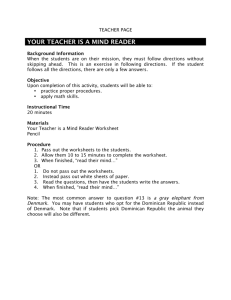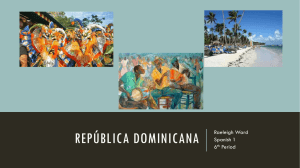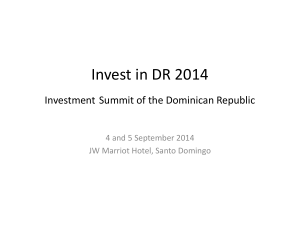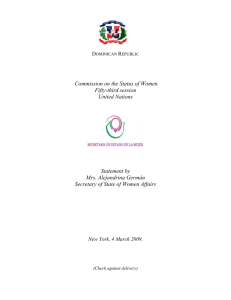Mid Term Close Reading Practice
advertisement
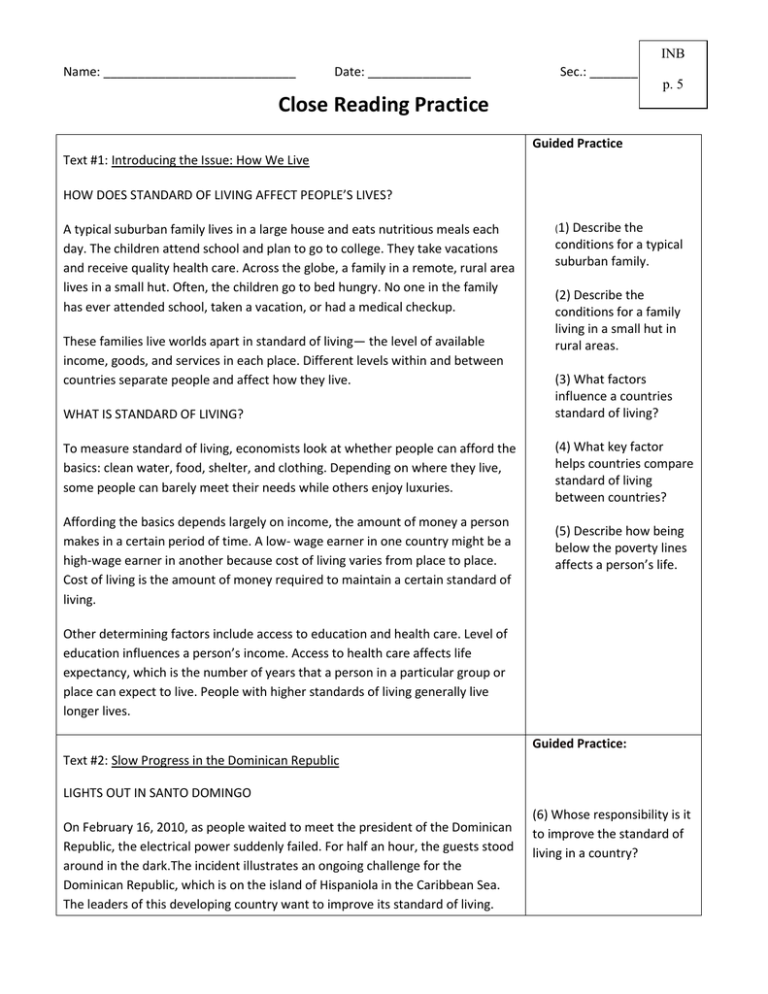
INB Name: ____________________________ Date: _______________ Sec.: _______ p. 5 Close Reading Practice Guided Practice Text #1: Introducing the Issue: How We Live HOW DOES STANDARD OF LIVING AFFECT PEOPLE’S LIVES? A typical suburban family lives in a large house and eats nutritious meals each day. The children attend school and plan to go to college. They take vacations and receive quality health care. Across the globe, a family in a remote, rural area lives in a small hut. Often, the children go to bed hungry. No one in the family has ever attended school, taken a vacation, or had a medical checkup. These families live worlds apart in standard of living— the level of available income, goods, and services in each place. Different levels within and between countries separate people and affect how they live. WHAT IS STANDARD OF LIVING? To measure standard of living, economists look at whether people can afford the basics: clean water, food, shelter, and clothing. Depending on where they live, some people can barely meet their needs while others enjoy luxuries. Affording the basics depends largely on income, the amount of money a person makes in a certain period of time. A low- wage earner in one country might be a high-wage earner in another because cost of living varies from place to place. Cost of living is the amount of money required to maintain a certain standard of living. (1) Describe the conditions for a typical suburban family. (2) Describe the conditions for a family living in a small hut in rural areas. (3) What factors influence a countries standard of living? (4) What key factor helps countries compare standard of living between countries? (5) Describe how being below the poverty lines affects a person’s life. Other determining factors include access to education and health care. Level of education influences a person’s income. Access to health care affects life expectancy, which is the number of years that a person in a particular group or place can expect to live. People with higher standards of living generally live longer lives. Guided Practice: Text #2: Slow Progress in the Dominican Republic LIGHTS OUT IN SANTO DOMINGO On February 16, 2010, as people waited to meet the president of the Dominican Republic, the electrical power suddenly failed. For half an hour, the guests stood around in the dark.The incident illustrates an ongoing challenge for the Dominican Republic, which is on the island of Hispaniola in the Caribbean Sea. The leaders of this developing country want to improve its standard of living. (6) Whose responsibility is it to improve the standard of living in a country? However, persistent power problems slow this progress to a crawl. As the power outage at the president’s palace revealed, the Dominican Republic still needs to develop its infrastructure, the system of utilities, roads, and structures that support modern life. In developed countries, having a dependable power grid means industries can develop, produce, and ship products to customers. Residents can power their lights, appliances, and electronics. Power is absolutely essential to boosting a country’s standard of living. FROM DICTATORSHIP TO DEMOCRACY The Dominican Republic has made some good progress toward improving its standard of living in recent decades. For one thing, it has become a democracy. In the 1800s, it was controlled by Haiti, the country with which it shares Hispaniola. In 1844, after a series of rebellions, the Dominican Republic declared independence. From 1930 to 1962, the Dominican Republic was ruled by a harsh dictator, Rafael Trujillo (ra-fee-EL troo-HEE-yoh). Following his overthrow, several presidents were elected by the people. Joaquin Balaguer (wah-KEEN bahl-ah-GUR) was elected in 1966 and served multiple terms in office. Under Balaguer, the country made some economic progress. During his third term (1986–1996), he tried to improve infrastructure by building roads, bridges, hydroelectric dams, and other public works—government constructed projects for public use. However, these projects plunged the country deeply into debt. In 1996, Dominicans forced Balaguer to step down. (7) According to the text, what challenge do the leaders of the Dominican Republic face when trying to improve a country’s standard of living? (8) What does the author mean when he says The Dominican Republic still needs to develop its infrastructure? (9) What negative effects could result from a country trying to improve its infrastructure? (10) Why was depending too much on agriculture a bad thing for Dominican Republic’s economy? (11) Why is it important for the Dominican Republic to diversify? BOOSTING THE STANDARD OF LIVING Independent Practice At the same time, the service sector started to take off. Companies that export and import products prospered. Tourism was a bright light, as the country’s mild climate, beautiful beaches, and reasonable costs drew thousands of tourists. In addition, the government restored many of the magnificent buildings from the Spanish colonial period. (12) Describe the ways that the Dominican Republic’s economy improved. As the economy developed a broader base, GDP per capita slowly increased. GDP per capita is the total value of all goods and services produced in a country in a year, divided by population. As the chart on this page shows, GDP per capita is about 7 times higher than it is in neighboring Haiti, the poorest country in the Western Hemisphere. The Dominican middle class has grown, and the literacy rate has increased to 87 percent. These improvements have helped to reduce some of the income gap, or the difference in average wages between rich and poor. As a result, these improvements have helped to raise Dominicans’ standard of living. (13) How has the income gap been reduced in the Dominican Republic? (14) What problems did the Dominican Republic encounter as they tried to improve their country’s infrastructure? IMPROVING INFRASTRUCTURE Progress slowed dramatically due to inadequate infrastructure. Having too few power plants and poor roads, for example, hurt the economy by making it difficult for producers to manufacture and send their goods to markets. Delivering electricity has been an ongoing, troublesome problem, as the blackout at the palace showed. This problem has several causes. In the 1980s, blackouts occurred because too few power plants existed. Aggravating the problem was the fact that the government owned the plants and ran them inefficiently. As industry grew, the demand for electricity rose. In response, the government encouraged privatization, the transfer of ownership from the government to the private sector. By 2003, privately run power companies finally had the capacity to produce sufficient power. POWERING UP THE FUTURE Yet the country’s energy problems persisted. During the 2000s, global oil prices rose, and since power companies import oil to produce electricity, utility costs soared. Individuals and government agencies alike had trouble paying their electric bills. In addition, during the years when the government provided electricity, customers had grown accustomed to free service and now feel they should not have to pay for poor service. Consequently, electric companies have had less money to invest in capital improvements. The Dominican Republic’s leaders are seeking ways to solve the power problem soon. Improving supply and meeting demand will convince customers to pay for the power they use. Recently, the country’s largest power company awarded a contract for a new plant to a manufacturer in Finland. Delivering more power efficiently will power the country strongly toward the future. (16) Explain how the Dominica Republic’s energy problems persisted.
